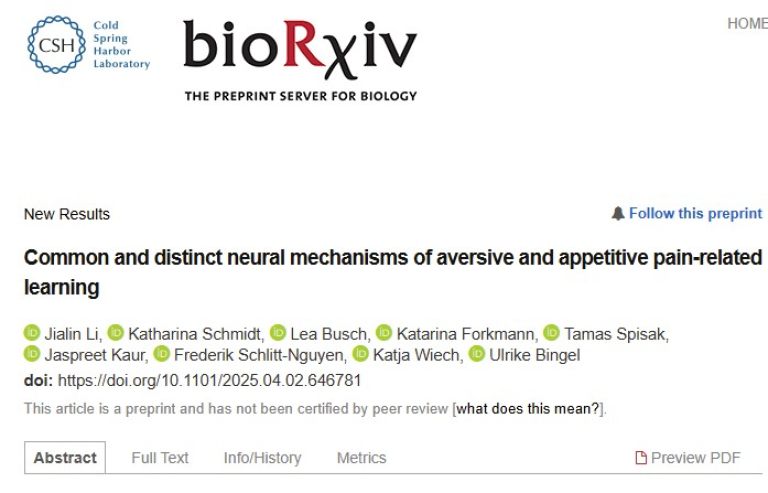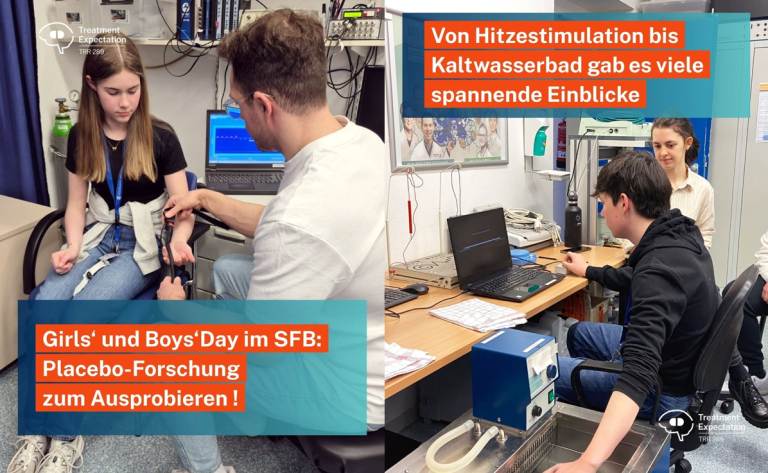After many rehearsals, yesterday some of our lab members participated in the on-site review for the third funding period of the Collaborative Research Center 1280. We represented project A11 which investigates the neural and behavioral mechanisms underlying the acquisition, extinction and reinstatement of pain-related fear in the context of somatic pain. The newly planned project for the third funding period will tackle learning and extinction in dynamic environments in healthy individuals and chronic pain patients. Now we have our fingers crossed until the DFG makes their final decision!
In the picture from left to right: Katja Wiech, Katarina Forkmann, Jialin Li, Lea Busch, Ulrike Bingel, & Katharina Schmidt














